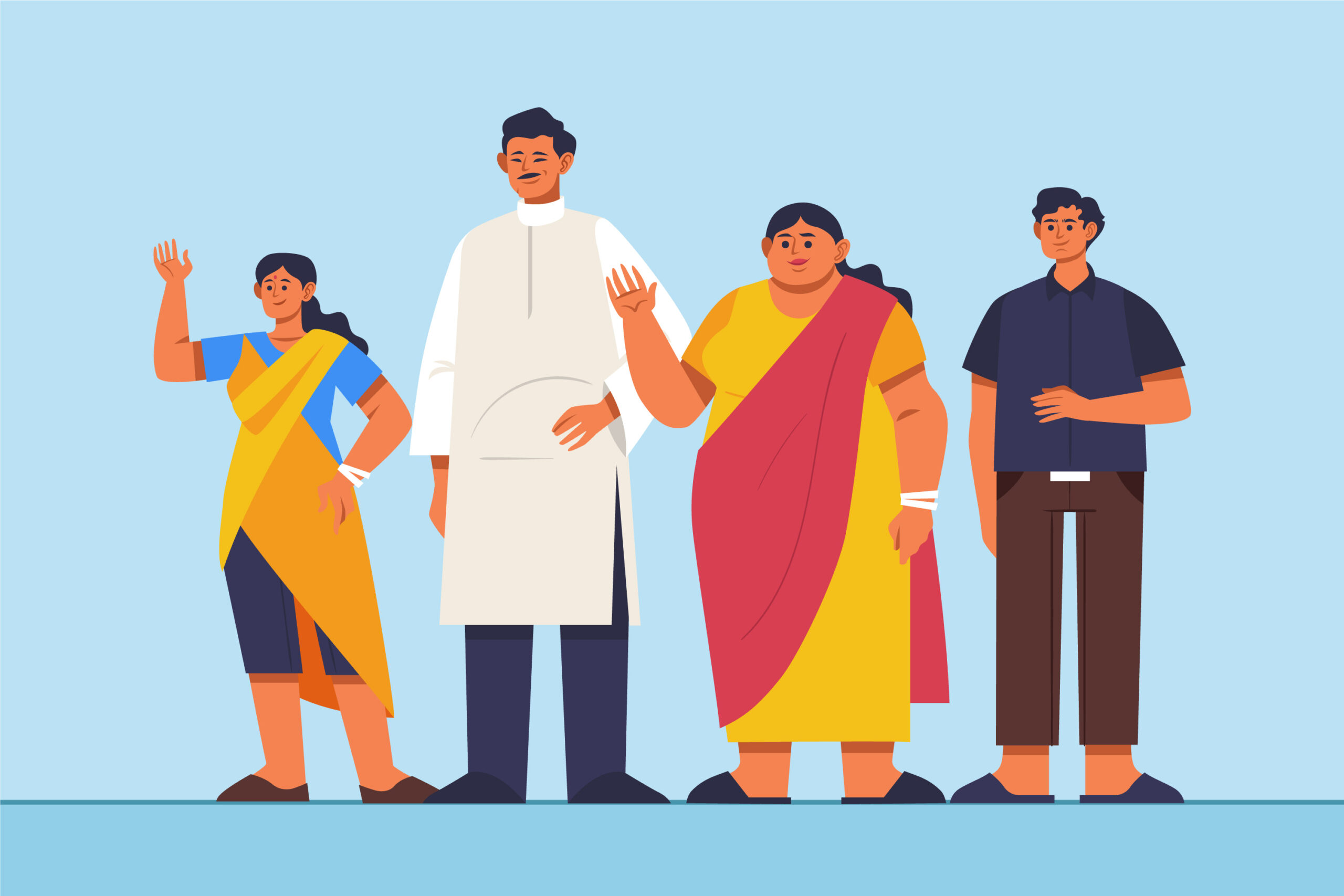The Contentious Call for a Caste Census in India: Unpacking the Debates and Implications
The question of conducting a caste-based census in India is a deeply complex and politically charged issue that has resurfaced with renewed vigor in recent times.1 While the enumeration of Scheduled Castes (SCs) and Scheduled Tribes (STs) has been a part of the census exercise post-independence, the inclusion of Other Backward Classes (OBCs) and other castes has remained a contentious debate. As India gears up for its next census, the demand for a comprehensive caste census has grown louder, fueled by arguments for social justice, equitable resource allocation, and more effective policymaking. However, this demand is met with significant reservations, primarily concerning the potential for reinforcing caste identities and exacerbating social divisions. This article delves into the history of caste enumeration in India, the arguments for and against a caste census, the experiences of states that have undertaken such surveys, and the potential implications for the nation’s future.
A Historical Overview of Caste Enumeration in India
The practice of collecting caste-based data in India dates back to the British colonial era. From 1881 to 1931, the decennial census routinely included caste as a crucial parameter for categorizing the population for administrative and revenue purposes. This data later became a significant statistical foundation for post-independence policymaking, most notably informing the recommendations of the Mandal Commission in the late 1970s, which advocated for reservations for OBCs in government jobs and educational institutions.2
However, with the first census of independent India in 1951, the government discontinued the practice of enumerating all castes, primarily with the aim of fostering national unity and avoiding the perpetuation of caste divisions.3 Since then, only the population of SCs and STs has been systematically recorded in the census. Nevertheless, the need for data on other caste groups, particularly the OBCs, continued to be felt, especially in the context of affirmative action and social welfare programs.
In 2011, the Socio-Economic and Caste Census (SECC) was conducted, aiming to assess the socio-economic status of households across the country and collect caste-related information.4 However, the data collected on caste faced significant issues regarding accuracy and consistency, and its findings were never fully released or utilized effectively.5 This has further intensified the demand for a more robust and reliable caste census as part of the regular decennial census exercise.
The Arguments in Favor of a Caste Census
Proponents of a caste census argue that it is an essential tool for achieving social justice and ensuring equitable development.6 Their key arguments include:
- Addressing Social and Economic Inequalities: A caste census can provide accurate data on the socio-economic conditions of various caste groups, highlighting the disparities in education, income, health, and access to resources.7 This data is crucial for understanding the extent of historical and ongoing discrimination and for designing targeted interventions to uplift marginalized communities. For instance, if a particular OBC sub-group is found to be significantly lagging in educational attainment, specific programs can be tailored to address their needs.
- Evidence-Based Policymaking: Reliable caste data can inform the formulation of more effective and equitable policies and programs.8 Without accurate figures on the population and socio-economic status of different caste groups, policymakers often rely on outdated estimates or broad generalizations, which may not reflect the ground realities. A caste census can provide the empirical evidence needed to design and implement affirmative action policies, welfare schemes, and developmental initiatives that are truly inclusive and reach those who need them the most.9
- Ensuring Equitable Resource Allocation: Understanding the demographic distribution of different caste groups is essential for the fair allocation of resources and the effective implementation of development programs.10 A caste census can provide insights into the specific needs and deprivations faced by various communities, enabling the government to allocate funds and design schemes that address these needs in a targeted manner.11 For example, if a significant proportion of a particular caste group lacks access to sanitation facilities, resources can be specifically directed to improve sanitation coverage in their areas.
- Monitoring the Effectiveness of Affirmative Action: While reservations and other affirmative action policies have been in place for SCs and STs for decades, and subsequently for OBCs, a comprehensive caste census can help in evaluating the impact and effectiveness of these policies.12 By providing updated data on the representation of different caste groups in education, employment, and other sectors, a caste census can inform decisions about the continuation, modification, or expansion of these policies to ensure that they are achieving their intended goals.13
- Providing a Comprehensive Picture of Indian Society: Caste continues to be a significant social reality in India, influencing social relationships, economic opportunities, and political dynamics.14 A caste census can offer a more nuanced and comprehensive understanding of the country’s social fabric, shedding light on the diversity and the interrelationships between different caste groups. This data can be valuable for researchers, social scientists, and policymakers in analyzing social trends and formulating strategies for social cohesion.15
The Arguments Against a Caste Census
Despite the compelling arguments in its favor, the proposal for a caste census also faces significant opposition and concerns:
- Reinforcing Caste Identities and Social Divisions: A primary concern is that a caste census might inadvertently reinforce caste identities and exacerbate social divisions.16 Critics argue that enumerating individuals by caste could lead to a greater emphasis on caste-based affiliations, potentially undermining efforts towards a casteless society and hindering social integration.17 There is a fear that it could further entrench existing social hierarchies and create new forms of competition and conflict along caste lines.
- Complexity and Potential for Errors: India’s caste system is incredibly complex, with numerous castes, sub-castes, and regional variations.18 Accurately classifying individuals and avoiding errors in enumeration would be a monumental challenge. Similar-sounding caste names, variations in nomenclature across regions, and the subjective nature of self-identification could lead to significant data inconsistencies and inaccuracies, rendering the census unreliable.19 The experience of the SECC 2011, which faced substantial data quality issues, underscores this concern.20
- Potential for Political Misuse: There are apprehensions that caste data could be misused for political mobilization and electoral gains. Political parties might exploit caste identities to consolidate their vote banks, potentially leading to further polarization and fragmentation of society along caste lines. The focus on caste might overshadow other crucial socio-economic indicators and divert attention from broader developmental issues.21
- Administrative Challenges and Costs: Conducting a comprehensive caste census involving the enumeration of thousands of castes and sub-castes across the country would be a massive administrative undertaking, requiring extensive training of enumerators and significant financial resources. The logistical challenges of accurately collecting, compiling, and analyzing such a vast amount of data are considerable.
- Defining Backwardness: The criteria for defining and categorizing backward classes are themselves complex and contested.22 A caste census would need to grapple with the issue of which castes to include in the OBC category and how to address the variations in socio-economic conditions within and between different castes. This could lead to legal challenges and further controversies.
Experiences of State-Level Caste Surveys
In recent years, some states in India have independently conducted or attempted to conduct caste surveys.23 These experiences offer valuable insights into the process, challenges, and potential outcomes of such exercises:
- Bihar Caste Survey (2023): Bihar recently completed a comprehensive caste survey, which revealed that OBCs and Extremely Backward Classes (EBCs) constitute a significant majority of the state’s population. The findings have triggered demands for a recalibration of reservation quotas in the state. However, the survey also faced legal challenges and debates regarding its methodology and the categorization of certain caste groups.
- Karnataka Caste Survey (2015, Report not fully accepted): Karnataka conducted a caste survey in 2015, but its report has not been officially accepted or released by the government due to concerns about the accuracy and methodology of the data. This highlights the difficulties in conducting a reliable caste survey and the potential for political sensitivities surrounding its findings.24
- Telangana Caste Survey (Ongoing in 2024-25): Telangana has also initiated a caste survey aimed at gathering data on the socio-economic conditions of different caste groups in the state.25 The outcomes and impact of this survey are yet to be seen.
These state-level initiatives demonstrate the growing political demand for caste data at the grassroots level and the complexities involved in conducting such surveys.26 The methodologies adopted, the challenges encountered, and the political responses to the findings vary across states, underscoring the need for a well-defined and nationally accepted framework if a nationwide caste census is to be undertaken.
Potential Implications of a Nationwide Caste Census
If the Indian government decides to include a comprehensive caste census in its upcoming national census, it could have far-reaching implications across various domains:
- Social Justice and Affirmative Action: The most immediate impact would likely be on the debate surrounding reservations and other affirmative action policies. Accurate caste data could lead to demands for a re-evaluation of existing quotas to better reflect the population share of different caste groups. It could also fuel discussions on extending affirmative action to other backward communities or modifying the criteria for determining backwardness. The Supreme Court’s 50% cap on total reservations remains a crucial factor in this context.27
- Political Landscape: Caste continues to be a significant factor in Indian politics.28 A caste census could reshape political strategies, as parties gain a clearer understanding of the demographic composition of their constituencies and the relative strength of different caste groups.29 It might lead to a greater emphasis on caste-based mobilization and the articulation of caste-specific demands.
- Resource Allocation and Development Planning: Reliable caste data could enable more targeted and equitable allocation of resources for development programs.30 By identifying the specific needs and deprivations of different caste groups, the government could design and implement schemes that address these disparities more effectively, leading to more inclusive development outcomes.
- Social Cohesion and Identity Politics: The impact on social cohesion is perhaps the most debated aspect. While proponents argue that a caste census is necessary to address historical injustices and promote equality, critics fear that it could further entrench caste identities and lead to increased social fragmentation. The way the data is collected, analyzed, and used by the government and political actors will be crucial in determining its impact on social harmony.
- Data and Research: A comprehensive caste census would provide a wealth of data for researchers, social scientists, and policymakers. This data could be invaluable for studying social inequalities, understanding demographic trends, and evaluating the impact of various social and economic policies. However, ensuring the accuracy, reliability, and ethical use of this data would be paramount.
Conclusion
The demand for a caste census in India is rooted in the quest for social justice and equality.31 Proponents argue that accurate caste data is essential for understanding and addressing the deep-seated inequalities that persist in Indian society. They believe it will lead to more evidence-based policymaking, fairer resource allocation, and a more effective implementation of affirmative action.
However, the concerns raised by opponents regarding the potential for reinforcing caste identities, the complexity of enumeration, the risk of political misuse, and the administrative challenges are also significant.32 The experiences of states that have undertaken caste surveys highlight the difficulties in ensuring accuracy and the potential for political controversies.33
Ultimately, the decision of whether or not to conduct a nationwide caste census involves a careful weighing of the potential benefits of addressing historical injustices and promoting equity against the risks of exacerbating social divisions and the practical challenges of implementation. As India stands at this crucial juncture, a broad and inclusive dialogue involving all stakeholders is essential to navigate this complex issue and determine the best path forward for a more just and equitable society. The need is to ensure that any such exercise is conducted with utmost care, transparency, and a clear focus on promoting social harmony and inclusive development for all its citizens.

















